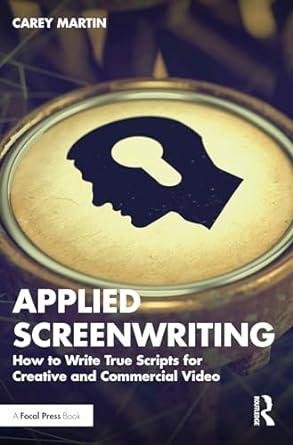Screenwriting is both an art and a science, blending creative storytelling with the structured demands of the film and television industry. The book "Applied Screenwriting: How to Write True Scripts for Creative and Commercial Video" offers invaluable insights into this intricate craft. In this article, we'll explore the key concepts and practical applications from the book, guiding you through the process of writing scripts that are both compelling and commercially viable.
Understanding the Basics of Screenwriting
The foundation of any great script lies in understanding the basics of screenwriting. This involves mastering the format, structure, and language of scripts.
- Script Format: The industry-standard format for scripts ensures readability and helps convey the story effectively to producers, directors, and actors. This includes understanding margins, font types, and specific layout rules.
- Three-Act Structure: The classic three-act structure is a blueprint for storytelling, dividing the narrative into setup, confrontation, and resolution. This structure helps in maintaining a coherent and engaging flow.
- Character Development: Creating multi-dimensional characters is crucial. Characters should have clear goals, motivations, and conflicts, making them relatable and compelling to the audience.
- Dialogue Writing: Effective dialogue reveals character and advances the plot. It should sound natural and reflect the unique voices of each character.
Crafting Compelling Stories
Once the basics are in place, the next step is to craft stories that captivate audiences. This involves several key elements:
- Originality: While many stories follow familiar structures, adding a unique twist or perspective can make your script stand out. This could be through setting, character backgrounds, or plot devices.
- Theme: A strong theme provides a deeper meaning to the story and resonates with the audience. It’s the underlying message or central idea that the script aims to convey.
- Conflict and Tension: Conflict is the driving force of any story. It creates tension and keeps the audience engaged. This can be internal (within a character) or external (between characters or with external forces).
- Pacing: The rhythm of the story is crucial. Well-paced scripts maintain interest by balancing action with moments of reflection and character development.
Balancing Creativity and Commercial Viability
For a script to be successful, it needs to balance creative storytelling with commercial appeal. Here are some strategies:
- Market Research: Understanding current market trends can help tailor your script to what’s in demand. This doesn’t mean compromising your vision but aligning it with audience preferences and industry needs.
- Genre Conventions: While originality is important, adhering to certain genre conventions can increase the commercial appeal of your script. Each genre has specific elements that audiences expect.
- Pitching and Selling: Crafting a compelling pitch is essential for getting your script noticed. This involves summarizing your story succinctly and highlighting its unique selling points.
- Networking: Building relationships within the industry can open doors. Attend industry events, join screenwriting groups, and connect with professionals who can provide guidance and opportunities.
Practical Exercises and Applications
The book "Applied Screenwriting" emphasizes practical exercises to hone your skills. Here are a few exercises to try:
- Character Biographies: Write detailed biographies for your main characters, including their background, personality traits, and motivations. This will help in creating authentic and consistent characters.
- Scene Writing: Practice writing scenes focusing on different aspects like dialogue, action, or emotional beats. This will improve your versatility as a writer.
- Script Analysis: Study successful scripts within your genre. Analyze their structure, character arcs, and dialogue to understand what makes them effective.
- Peer Feedback: Sharing your work with fellow writers and getting feedback can provide new perspectives and highlight areas for improvement.
Case Studies and Examples
The book includes case studies of successful scripts, breaking down their components to understand what made them work. Here are a few insights:
- Case Study 1: "The Shawshank Redemption": This script is renowned for its strong character development and thematic depth. The protagonist’s journey is compelling and emotionally resonant, making it a timeless story.
- Case Study 2: "Breaking Bad": The series is a masterclass in character transformation and maintaining tension. The gradual evolution of the main character keeps the audience invested.
- Case Study 3: "Inception": This script showcases innovative storytelling and complex plot structures. Its success lies in balancing high-concept ideas with strong emotional arcs.
Adapting Your Script for Different Mediums
Scripts can be adapted for various mediums, including film, television, and digital platforms. Each medium has its nuances:
- Film: Typically longer and more detailed, film scripts allow for in-depth character exploration and elaborate plots.
- Television: TV scripts often have episodic structures, requiring concise storytelling and the ability to maintain ongoing narratives across multiple episodes.
- Digital Platforms: With the rise of streaming services and online content, there’s a demand for short-form scripts that are engaging and suitable for digital consumption.
"Applied Screenwriting: How to Write True Scripts for Creative and Commercial Video" is an essential resource for anyone looking to excel in screenwriting. By understanding the basics, crafting compelling stories, balancing creativity with commercial viability, and applying practical exercises, you can create scripts that resonate with audiences and stand out in the industry. Whether you’re an aspiring screenwriter or a seasoned professional, the insights and strategies from this book will help you refine your craft and achieve success in the competitive world of screenwriting.
